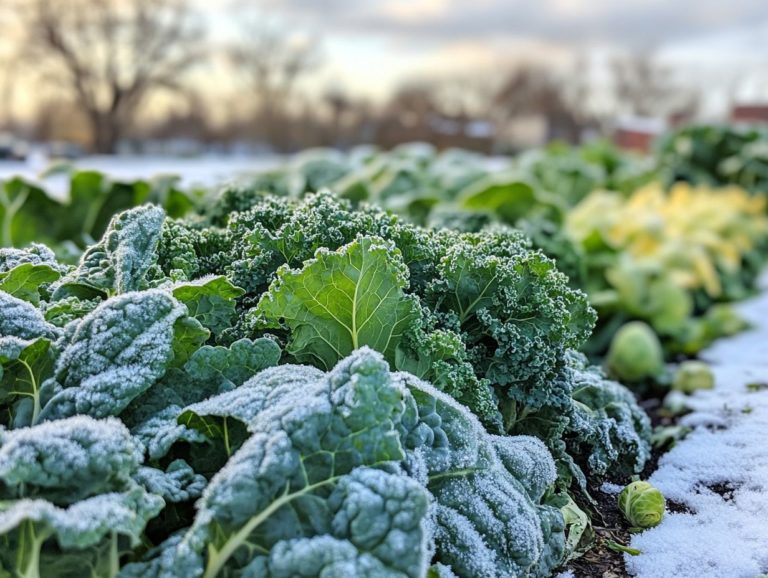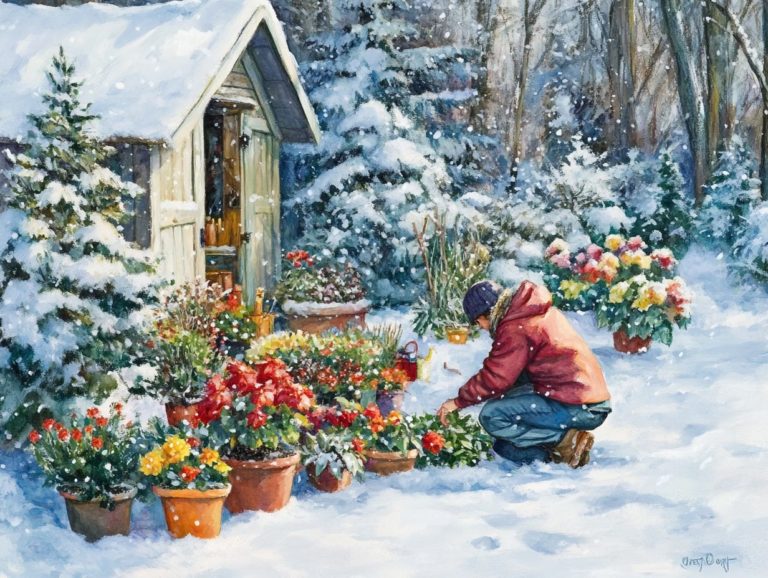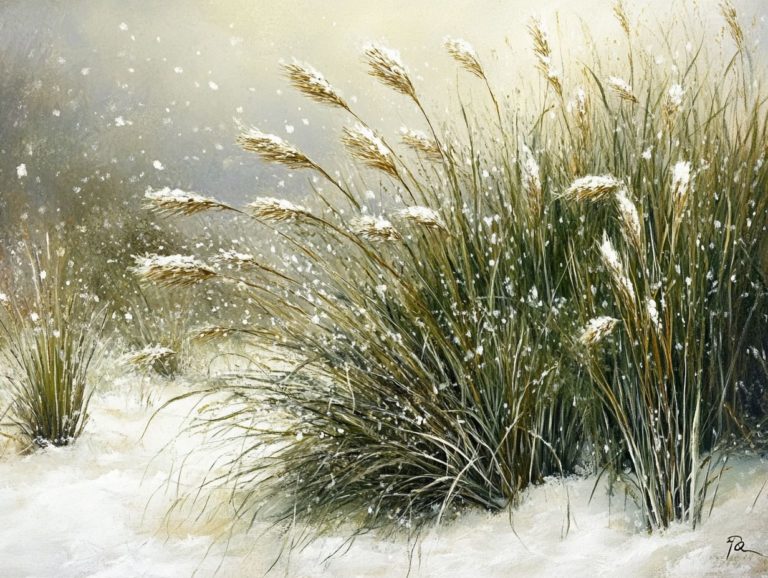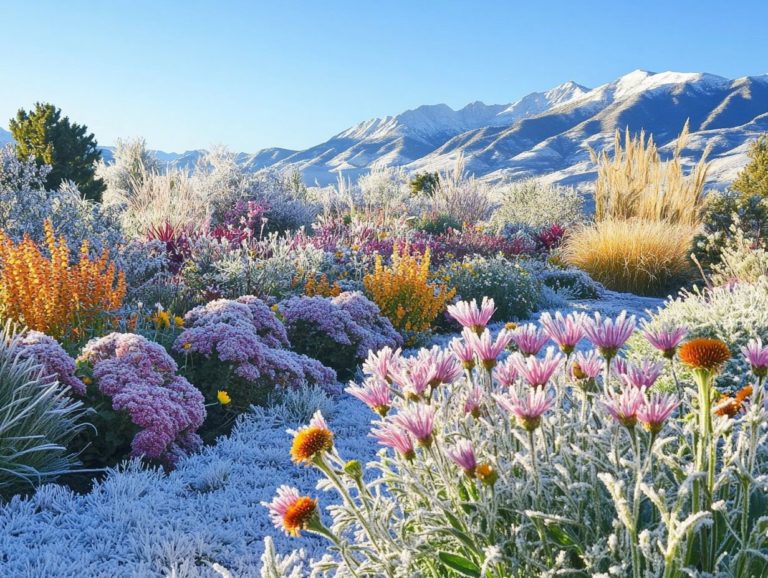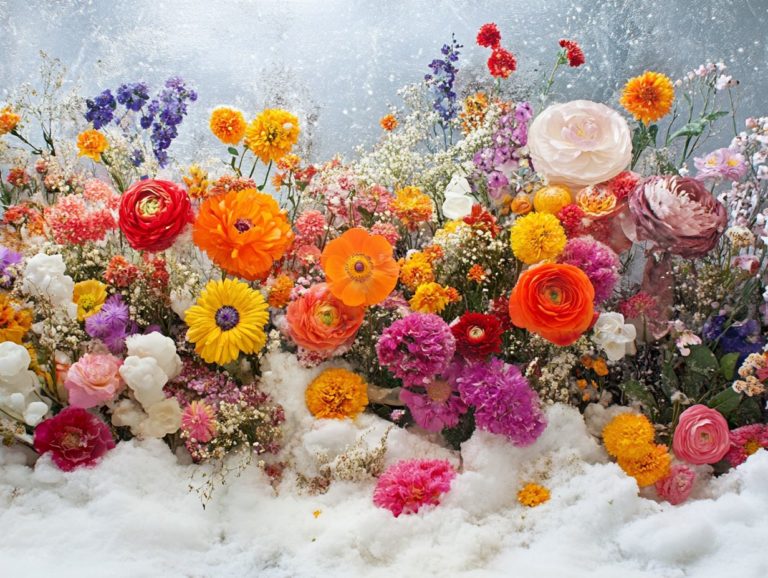Top 5 Ground Covers for Cold Climates
Are you aiming to elevate your garden’s beauty and functionality during the colder months? Choosing the right ground covers can truly transform your outdoor space, offering vibrant greenery and protection against the elements. Incorporating diverse garden plants also enhances both visual appeal and ecological health.
Get ready to discover five amazing cold-hardy ground covers that will transform your garden! This article highlights the top five options perfectly suited for cold climates, including Wintergreen and Blue Star Creeper. You’ll also find essential tips on preparing your garden for winter, maintaining these resilient plants, and avoiding common pitfalls with advice from seasoned master gardeners.
Uncover the secrets to cultivating a thriving garden that endures the frost!
Contents
Key Takeaways:
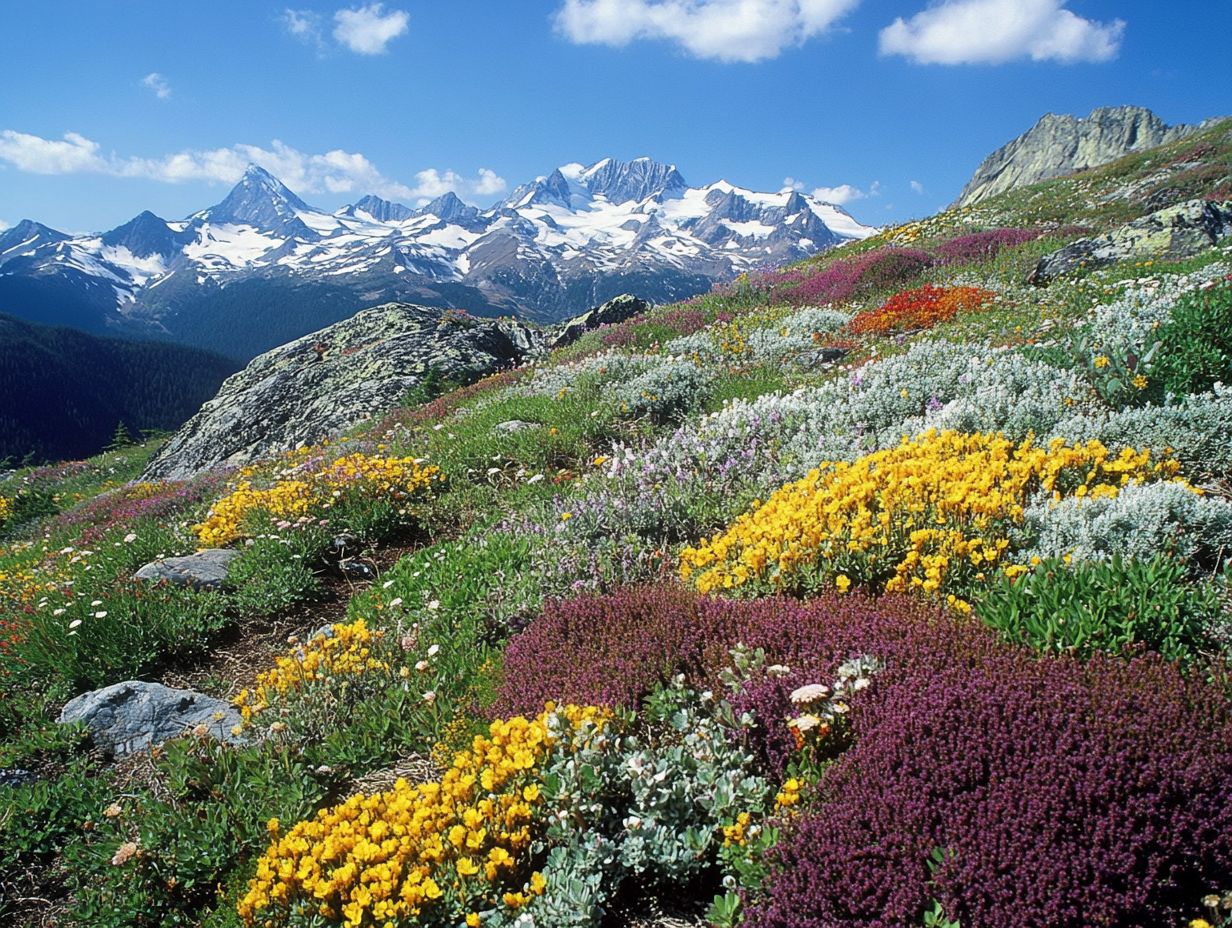
- Consider hardiness, growth habits, and soil needs when choosing ground covers.
- Prepare your garden for winter with mulch and cold-tolerant plants.
- Ground covers insulate, prevent erosion, and brighten winter landscapes.
1. Wintergreen
Wintergreen is a remarkable cold-hardy ground cover that thrives in various planting areas, making it a preferred choice among master gardeners. It effectively retains moisture while adding beauty to any garden landscape with its evergreen foliage and charming berries.
This versatile plant flourishes in full sun and adapts seamlessly to part shade, making it ideal for a range of conditions. Its robust, low-growing nature helps prevent soil erosion, providing stability to slopes and bolstering the health of surrounding ecosystems.
Wintergreen also acts as a natural mulch, suppressing weeds and regulating soil temperature, which enhances the overall vitality of nearby plants. By integrating this evergreen into your garden design, alongside other shade-tolerant options like Creeping Jenny, you not only beautify your environment but also promote healthier, sustainable gardening practices.
2. Creeping Juniper
Creeping Juniper is your go-to option if you’re looking for resilient ground cover that excels at erosion control while thriving in full sun. This plant isn’t just about practicality; it’s celebrated for its drought resistance, effortlessly flourishing in arid conditions where other plants might falter.
Imagine how pleasing it is to see its attractive foliage throughout the seasons, complemented by lovely blooms that inject vibrant color into your landscape. Its low-growing habit makes it an ideal partner for taller flowering plants, including beautiful blooms like those of Cheddar Pinks, creating a striking visual contrast that enhances the overall aesthetics of your garden.
This adaptability not only ensures a beautiful outdoor space but also plays a crucial role in maintaining soil integrity across various terrains.
3. Siberian Carpet Cypress
The Siberian Carpet Cypress is a standout choice for anyone seeking a cold-hardy ground cover among other excellent options such as Angelina Sedum. Its lush green foliage creates a beautiful blanket over the soil, enhancing your garden design while effectively retaining moisture and thriving in colder climates.
Beyond its visual appeal, this remarkable ground cover pairs beautifully with other shade-tolerant plants, making it an excellent option for creating harmonious garden beds. The dense mat of foliage serves as a stunning backdrop for various flora and plays a crucial role in suppressing weeds, enabling neighboring plants to flourish without the struggle for resources.
Its extensive root system significantly stabilizes the soil, reducing erosion and promoting a healthier ecosystem. By incorporating this hardy plant, you can effortlessly transform your outdoor spaces while boosting biodiversity in your garden.
4. Snow-in-Summer
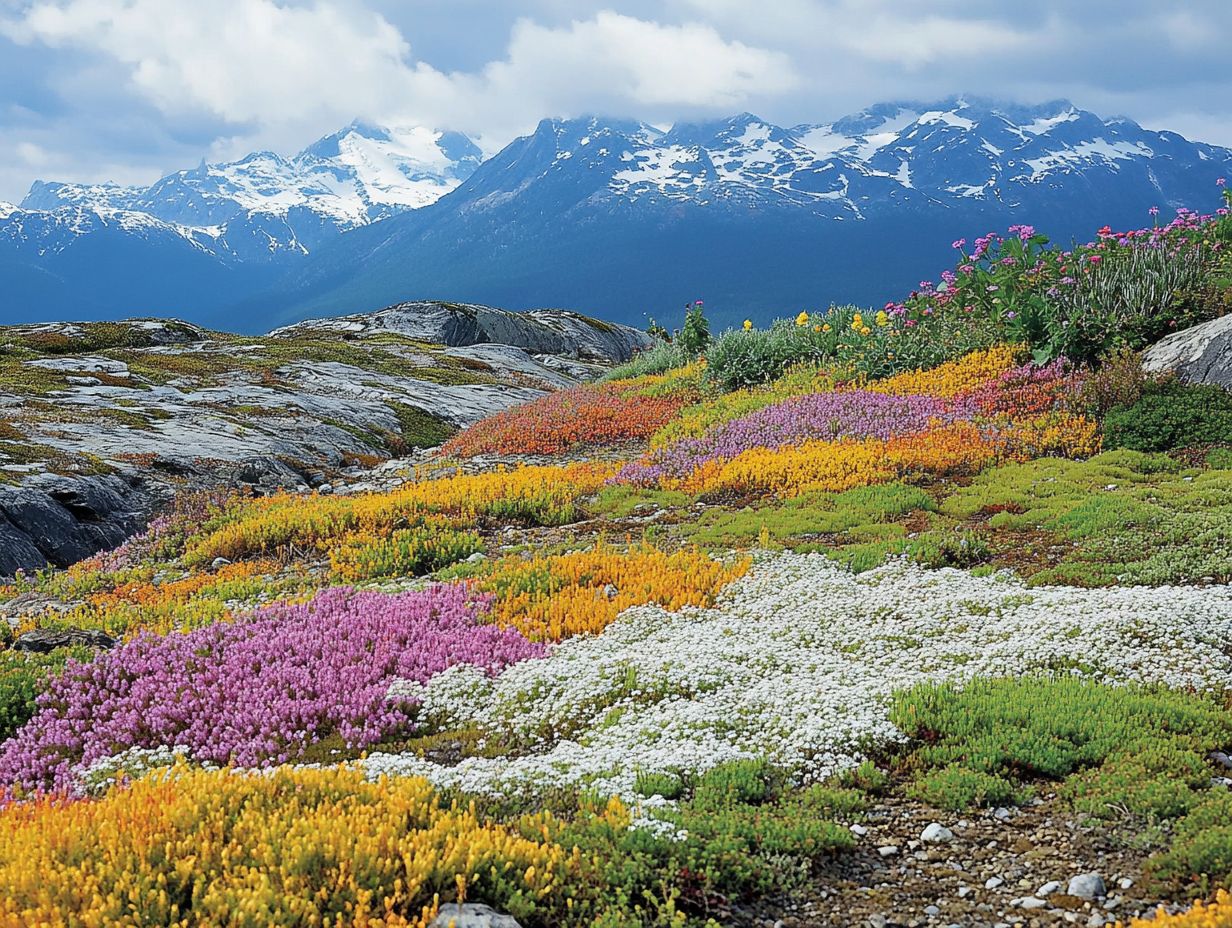
Snow-in-Summer is a remarkable perennial flowering plant that captivates with its stunning blooms. It thrives brilliantly in full sun. If you re looking for vibrant ground cover solutions like Creeping Thyme or Snow-in-Summer to elevate your garden’s visual appeal, this plant is an exceptional choice.
It bursts into bloom from late spring to early summer, transforming your landscape with delicate white flowers kissed by a hint of soft pink. Beyond its beauty, Snow-in-Summer helps with erosion by stabilizing soil and curtailing runoff, especially in sloped gardens. This makes it a fantastic choice for preventing soil from washing away.
This versatile perennial makes a perfect partner with creeping thyme and seasonal flowers like asters or daisies, alongside Candytuft and Creeping Phlox. Together, they weave a rich tapestry of colors and textures that not only pleases the eye but also nurtures a thriving garden ecosystem.
5. Blue Star Creeper
The Blue Star Creeper stands out as a versatile ground cover with delicate blue flowers. It thrives in part shade, making it an exceptional choice for those moist areas in your garden, where it excels in moisture retention and weed suppression.
This charming plant creates a lush, carpet-like aesthetic. Its blooming brings stunning visual appeal throughout spring and early summer. Garden designers rave about how well it pairs with shade-tolerant plants, including Japanese Forest Grass and Heuchera, enhancing the overall beauty of any garden bed.
Pairing the Blue Star Creeper with other perennial flowers creates layered textures and a delightful array of colors, resulting in a dynamic yet harmonious look. Its ability to flourish in diverse conditions makes it perfect for filling in gaps while fostering a healthy garden ecosystem.
What to Consider When Choosing Ground Covers for Cold Climates?
When selecting ground covers for cold climates, consider factors like cold hardiness, moisture retention capabilities, and effectiveness in erosion control, especially in areas prone to flooding. This ensures that plants like the lovely Creeping Jenny can thrive under varying conditions while enhancing your landscape with rich diversity. Additionally, incorporating top pest-resistant plants for cold climates can also help maintain a healthy garden.
Adaptability to full sun and partial shade is crucial, as it determines where these plants can flourish without compromising their health. Selecting ground covers that improve soil health is another key consideration; some species can enhance soil structure and fertility over time.
For example, creeping thyme not only offers a delightful scent and vibrant blooms but also thrives in sunny spots, making it ideal for your garden, especially when paired with Dragon s Blood Stonecrop. Similarly, creeping jenny adds a lovely splash of golden color, thriving in partial shade while helping to suppress weeds.
By focusing on these key features, you can create a resilient and beautiful landscape that stands the test of time.
How to Prepare Your Garden for Cold Weather?
Preparing your garden for cold weather involves several essential steps. Use natural mulch like shredded leaves and straw to ensure its health and vitality through the chill. Start by mulching with natural materials to enhance moisture retention, protect sensitive plants, and ensure your ground cover is well-established to withstand harsh conditions.
Using organic mulches like straw, shredded leaves, or bark is particularly beneficial. These materials can shield your soil from freezing temperatures, while promoting healthy microbial activity and enhancing moisture retention. Before the freeze sets in, check the moisture levels of your soil. A thorough watering will help prevent your plants from drying out during chilly nights.
Consider planting hardy ground covers, such as creeping thyme, Snow-in-Summer, or even Sweet Woodruff. They provide excellent insulation and help prevent soil erosion. Not only do they thrive in cooler temperatures, but using the top 5 planters for cold-climate gardening can enhance your efforts to create a stunning winter landscape that showcases beautiful blooms. This makes all your preparation efforts truly worthwhile.
What Are the Benefits of Using Ground Covers in Cold Climates?
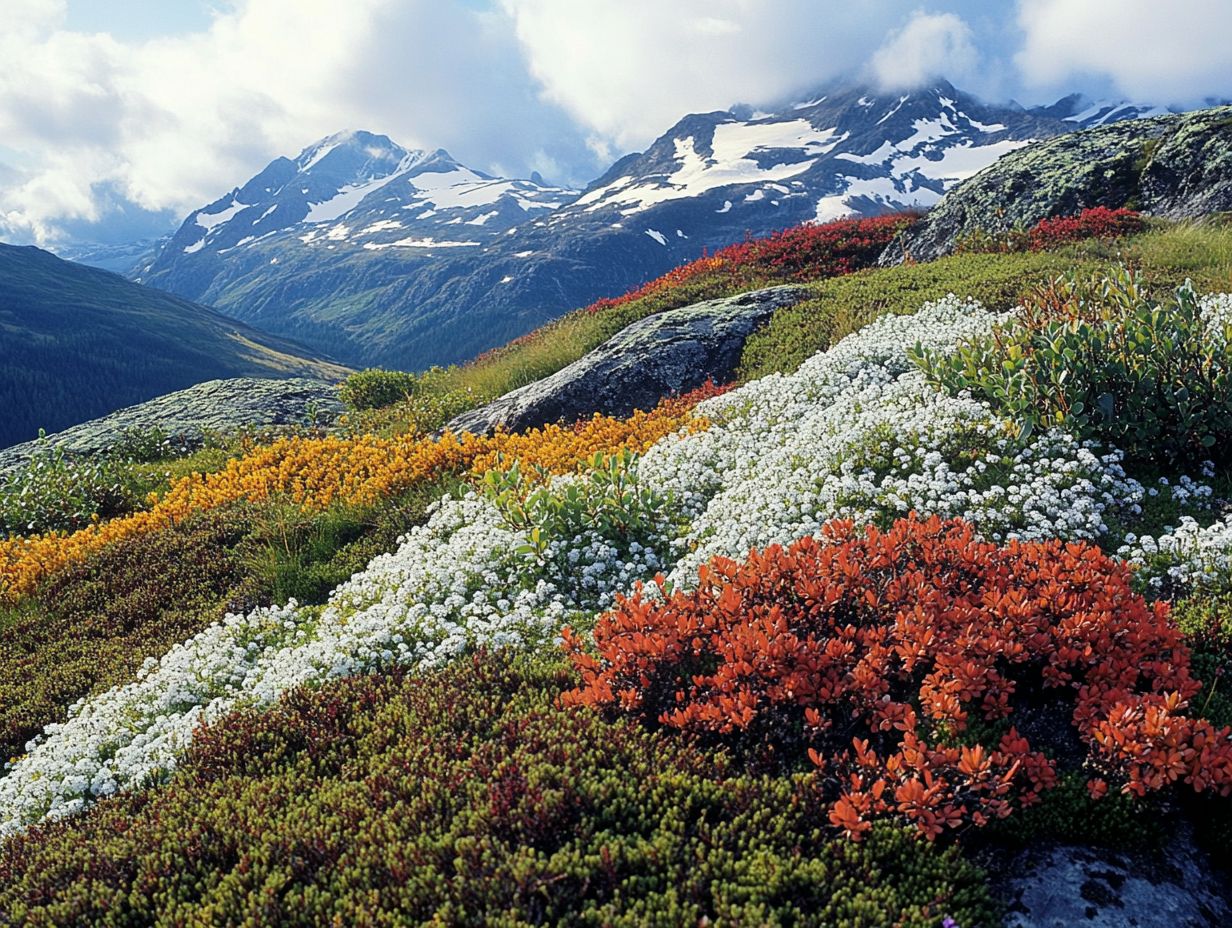
Implementing ground covers in cold climates brings a wealth of benefits. These include effective erosion control, improved moisture retention, and natural weed suppression. To select the best options, consider following the top 5 tips for selecting cold-hardy plants. All of these foster a healthier and more sustainable garden environment, encouraging a diverse range of plantings.
These plants protect the soil, mitigating the effects of harsh weather, such as heavy rainfall and freezing temperatures. They also minimize runoff that can lead to erosion. By developing a robust root system, ground covers enhance soil quality over time, facilitating better nutrient absorption and water infiltration. This makes them essential for maintaining healthy ecosystems.
The diverse range of species you choose, including Variegated Bishop s Goutweed and Blue Spruce Stonecrop, can enrich your plantings. They attract beneficial wildlife like pollinators and predatory insects. These plants not only beautify your garden but also promote biodiversity, creating a resilient ecosystem that flourishes even in the challenging conditions of cold climates.
How to Maintain Ground Covers in Cold Climates?
Maintaining ground covers in cold climates requires careful attention. Focus on moisture retention, minimizing weed growth, and regularly checking for pests or diseases to keep your garden vibrant and healthy.
To achieve this, implement a consistent watering schedule, especially for ground covers like Creeping Phlox during dry spells. Ensure that the soil stays moist without becoming waterlogged. For trimming, make periodic cutbacks and remove any dead or overgrown foliage to encourage fuller growth.
For cold-hardy options like creeping jenny and creeping thyme, ensure they re planted in well-drained soil and in spots that receive adequate sunlight. Applying a layer of mulch in the fall can also protect the plants during harsh winters while promoting healthy rooting.
With diligent care, these vibrant ground covers can thrive even in the coldest climates.
What Are Some Common Mistakes to Avoid When Using Ground Covers in Cold Climates?
When using ground covers in cold climates, you might encounter common pitfalls such as selecting the wrong plants, failing to adequately prepare planting areas, and neglecting moisture requirements. To avoid these mistakes and ensure a thriving garden, consider using the top 5 soil test kits for cold-climate gardens, as they can significantly enhance your garden’s health and aesthetic appeal.
It s easy to underestimate the importance of choosing varieties that can survive cold weather. This is crucial for achieving long-term success. Consider not only the sunlight your area receives but also the specific water and nutrient needs of your chosen plants.
Proper spacing is another key factor; overcrowded plants often struggle to thrive as they compete for limited resources. By addressing these frequent mistakes, you can cultivate a vibrant and enduring landscape that withstands harsh winters.
What Are Some Other Ground Cover Options for Cold Climates?
In addition to popular choices like creeping thyme and creeping jenny, you have a wealth of ground cover options that flourish in colder climates. To make the most of your garden, consider these top tips for planting in cold climates, which present you with an impressive selection of shade-tolerant and hardy flowering plants!
Consider plants like sweet woodruff and wild ginger; they create a lush, inviting carpet and thrive in shaded areas, adding rich texture and vibrant foliage to your landscape. Snow-in-summer, with its charming blanket of white blooms, offers a refreshing aesthetic during late spring. By incorporating these ground covers, you can effectively reduce soil erosion and suppress weeds, enhancing both the functionality and eco-friendliness of your garden.
Integrating varieties with complementary colors and growth habits can significantly boost the visual appeal of your space. This fosters biodiversity while creating a welcoming environment for pollinators and wildlife.
Frequently Asked Questions
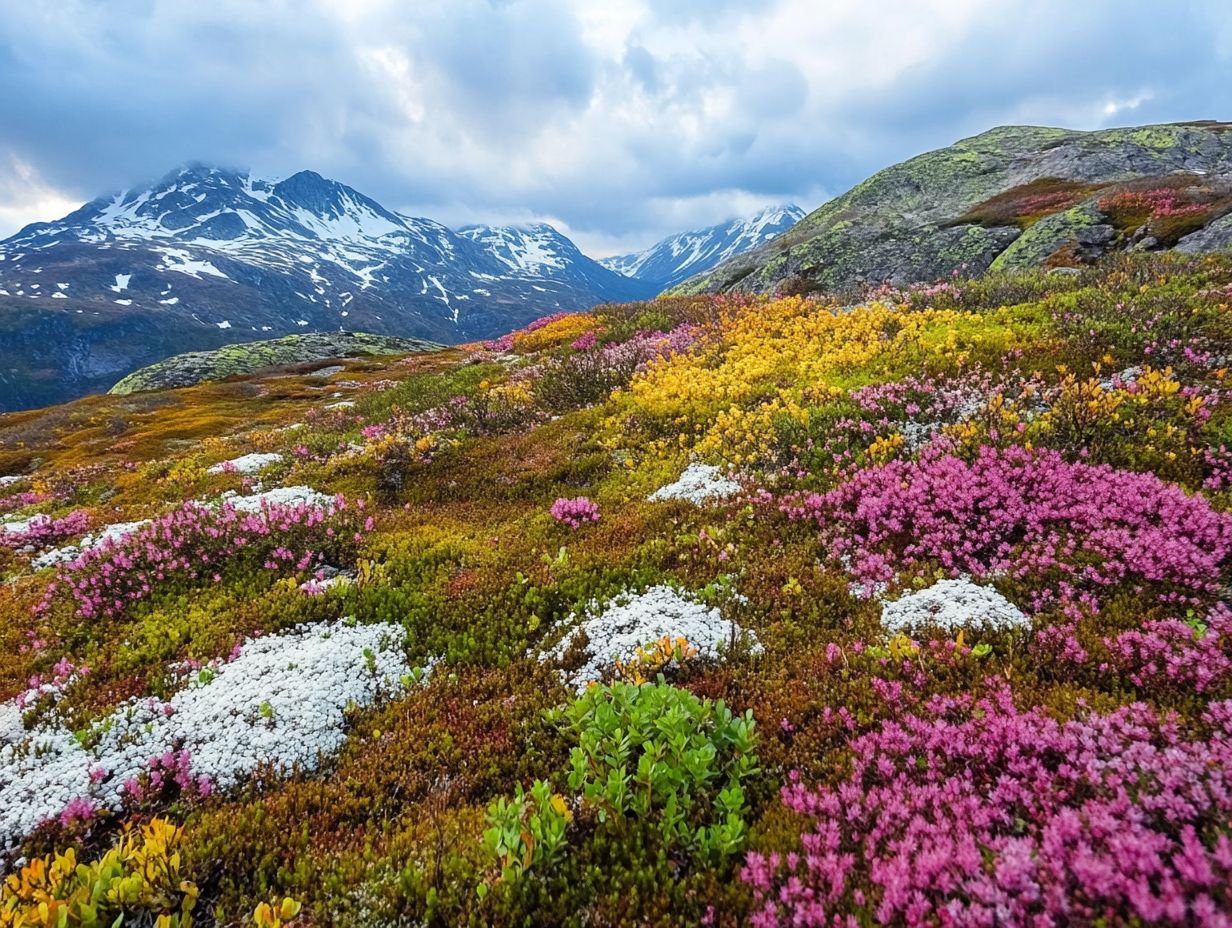
Here are some common questions about ground covers in cold climates.
Top Ground Covers for Cold Climates
Looking for the best ground covers that thrive in cold climates? Here are the top 5 shade-tolerant plants for cold climates: creeping thyme, creeping phlox, wintercreeper, creeping juniper, and creeping raspberry.
Why Choose Creeping Thyme?
Creeping thyme withstands freezing temperatures and stays green. It s a great choice for a vibrant garden all year round!
Creeping Phlox: A Low-Maintenance Option
This ground cover flourishes in sunny and partially shaded areas. It s perfect for those who want beauty without the extra work.
Wintercreeper and Soil Protection
Wintercreeper forms a dense cover, protecting the soil from winter damage. This helps prevent erosion and keeps nutrients intact.
The Resilience of Creeping Juniper
Creeping juniper is tough against drought, pests, and diseases. It s ideal for harsh climates where other plants might struggle.
Introducing Creeping Raspberry
Yes, creeping raspberry is a fantastic ground cover! It survives cold temperatures and produces colorful berries that attract wildlife.

